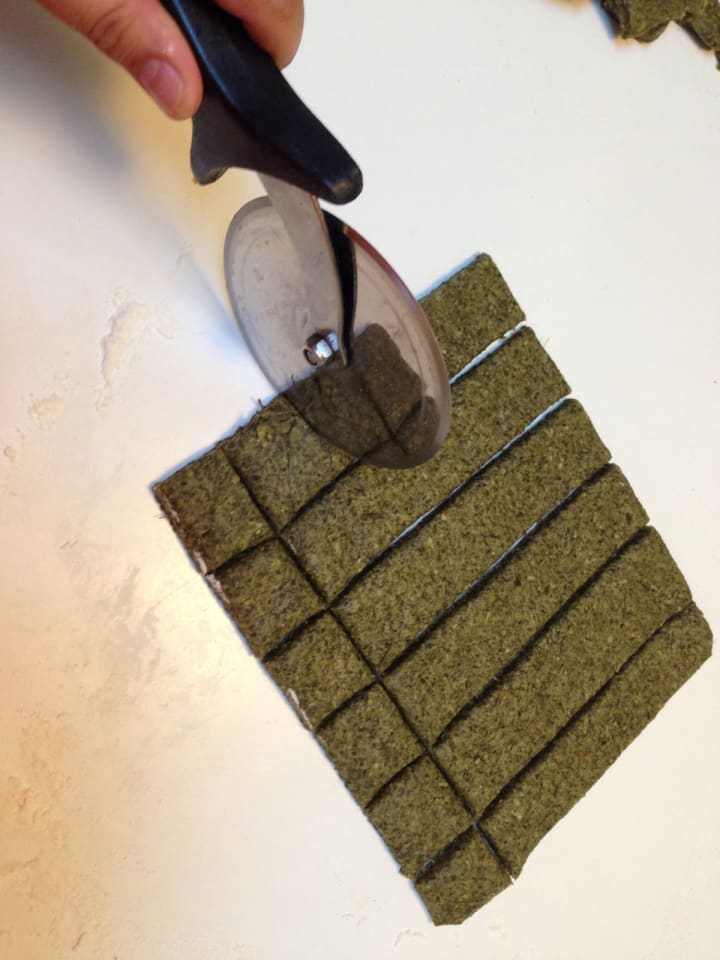Medical Marijuana for Dogs
Medical marijuana for dogs is revolutionizing vet care.

As more and more states legalize marijuana for both medical and recreational use, America is experiencing an unprecedented marijuana business boom. The number of Americans in support of the legalization of marijuana is continually increasing. When asked why they support legalizing cannabis, many supporters claim the herb has exceptional medical benefits.
As marijuana’s popularity continues to increase, businesses and researchers are finding creative ways to sell cannabis to the public. Cannabis oils, herbal salves, and homeopathic remedies are flooding the market. Even pet owners are being targeted. Doggy biscuits, edibles, and capsules containing cannabis compounds are permeating our pet stores. But what are the health benefits of these products, and how can medical marijuana for dogs help ailing pups?
Alleviating Ailments

Image via Releaf
Marijuana has been known to treat illnesses in humans for a long time. Some hemp historians trace medical marijuana usage back to 2900 B.C., when Chinese Emperor Fu Hsi referred to Ma, the Chinese word for cannabis, as a popular medicine that possessed both yin and yang. Today, marijuana can be used to alleviate symptoms of several illnesses and diseases, including cancer, glaucoma, Crohn’s disease, Alzheimer’s, and chronic migraines. Though marijuana studies have been mostly limited to human testing, pet owners can attest to the benefits of medical marijuana for dogs. Small doses can help with epilepsy, arthritis, chronic pains, loss of appetite, and cancer.
Prescribing medical marijuana to ailing pets is a major obstacle. Even in states where medical marijuana is legal, veterinarians are not legally allowed to give counsel favoring cannabis. While pet owners testify of the drug’s many benefits, veterinarians still prescribe sometimes damaging and often toxic over-the-counter pills. Many dog owners are ditching their vet’s recommended medicines for cannabidiol treats instead.
“Every time we gave Tramadol to Miles, a twelve-year-old black Labrador Retriever with cancer, he would just sleep,” explains Denise, a pet owner that supports medical marijuana for dogs. “He’d just lay there like he was dead.” Once a friend suggested she try a safe glycerin tincture of marijuana marketed as pet medicine, she knew there was nothing to lose. Her vet gave Miles only a couple months to live, and she was willing to try anything to ease her dog’s last months.
She immediately noticed a difference after the first dose she bought from one of her local licensed medical marijuana dispensaries. Within an hour, Miles’ appetite returned and he was no longer vomiting. “If Miles was on the Tramadol, he’d be in bed... and he’d probably be dead,” Denise says. “I’m just really grateful we found this.”
Safety Precautions

Image via You, Me and Maryjane
Denise isn’t the only pet owner to preach about the benefits of using medical marijuana for dogs. A quick search on the web unearths hundreds of positive testimonials. But due to the federal regulations on marijuana and a lack of interest in funding long term studies on drugs for animals, there are still too many unknowns concerning using cannabidiol products on pups.
Dr. Duncan Lascelles, a professor at North Carolina State University’s College of Veterinary Science, is concerned some veterinarians are doling out a variety of CBD medicines without knowing the side effects on animals.
“There are a number of veterinarians that are giving a variety of different products by a variety of different roots without any basis behind it at all,” he told Technician, the university’s student newspaper. Without knowing the basis, how can research effectively provide medical marijuana for animals?
Still, if you choose to pursue such treatment, there are several precautions to keep your dog safe when administering medical marijuana. Keep the doses small until you know your dog can tolerate the drug. This’ll help them avoid possible adverse effects. Also, keep the medicine out of reach between doses. Many professionals recommend dog-proofing your home to avoid accidental overdoses. Lastly, gather as much information about the product you’re using before you risk using it on Fido.
Dr. Lascelles wants you to remember, “animals aren’t making that free choice [to use medicinal marijuana]. We’re making the choice for them. It’s incumbent upon us to have all that knowledge to make the right choice for them.”
Signs of an Overdose

Image via NPR
Although medical marijuana for dogs can drastically improve the quality of life for sick canines, too much cannabis can be devastating for a pup. Animal overdoses are common in the states and cities where medicinal marijuana has been legalized, and can easily occur unintentionally.
Dogs that have overdosed may appear dazed, sleepy, and generally lethargic. However, symptoms can worsen with larger quantities of cannabis. In more severe cases, dogs can exhibit vomiting, tremors, hypothermia, diarrhea, and urinary incontinence. The worst overdoses can even lead to coma or death. These signs can occur within minutes of ingestion and can last from hours to days, partly due to the body fat storage of the active ingredients in marijuana.
If your dog experiences any of these symptoms or you suspect a cannabis overdose, call your emergency animal hospital immediately. Recognizing the signs of an animal overdose can save your dog’s life.
Treating Toxicity

Image via Herb
Symptoms of a marijuana overdose can be frightening when exhibited by your shaggy best friend. But with proper treatment and professional help, a dog showing extreme symptoms can make a complete recovery.
Treating an animal that is experiencing an overdose is similar to treating a human; Review the symptoms, counteract or eliminate them, and provide rest. If the dog is seen by a professional less than two hours after ingestion, and is exhibiting few symptoms, the veterinarian might induce emesis (vomiting) to clear the stomach of the intoxicant. Once vomiting is under control, the vet may administer charcoal to absorb whatever toxins are left in your pup. This will allow the toxins to rapidly travel through the gastrointestinal tract and lessen the chance of being stored in your dog’s body fat for continual exposure.
For furry patients showing more severe symptoms due to prolonged exposure, your vet will most likely recommend hospitalization. Profound sedation, hypothermia, excessive vomiting, or other clinical signs would warrant an overnight visit. Nurses will provided intravenous fluids, anti-nausea medications, and thermoregulatory support to promote a speedier recovery. Typically, marijuana toxicity patients are discharged upon the elimination of symptoms and once they can retain both food and water. This often occurs after a single night at an animal hospital.
The Revolution Continues

Image via You, Me and Maryjane
Although the majority of Americans have access to marijuana in some aspect, the drug is still considered illegal by the federal government. Businesses selling cannabidiol products bypass this by selling in states that allow the sale of marijuana for medicinal purposes.
There’s a catch though: Producers of hemp-based edibles, treats, and capsules are restricted in how they may advertise the products' effects and aren’t allowed to use medical jargon. If the warnings aren’t heeded, it’s considered a violation against the Federal Food, Drug, and Cosmetic Act. The U.S. Food and Drug Administration has been busy sending these warnings to small companies willing to make and sell products to help terminally ill pets.
But the marijuana business revolution continues. Cannabidiol biscuits, brownies, and baked goods will be sold to help sick humans and pets alike. Marijuana companies will continue to advertise and rake in millions while offering states that allow it their own share of the revenue. Some veterinarians will continue to prescribe the toxic drugs while others will offer more amenable holistic alternatives.
While many people consume cannabis for the euphoria provided by delta-9-tetrahydrocannabinol (THC), others forego the blissful state and seek out marijuana for health benefits. Medicinal marijuana utilizes cannabidiol (CBD) which is a non-psychoactive agent. When pet owners seek out medical marijuana for dogs, they want a substance that’ll give their ill pups a better quality of life, not a high. Many dog owners and supporters alike don’t see anything wrong with giving Fido a happier, healthier life.
Ethical Dilemmas

Image via The National Marijuana News
One of the biggest issues in administering medical marijuana for dogs is the issue of informed consent. A human knows that, when they take medical marijuana, their perception of reality will be altered. A dog does not. Imagine going about your day and suddenly, with no idea how or what it means, you're stoned? Imagine it happens and you don't have the mental reference to know what being stoned is, or if it will go away? This is why research is necessary to identify proper dosages, strains, and other specifications before medical marijuana should be administered to dogs on a broad basis.
However, with this research, medical marijuana for dogs could be a viable option against potentially debilitating drugs that have much harsher mental effects than a nice high. Then again, we give dogs chemotherapy and antidepressants without their consent, so giving them marijuana shouldn't be much different. Its controversy among humans has made it more controversial among our furry friends, but overall it is a less toxic option to the same ethical dilemmas we face every time we medicate an animal.
About the Creator
Chelsea Lynne
Enthusiastic bunny lover. Member of Diet Coke anonymous. Still trying to figure out what Type B means.
Enjoyed the story? Support the Creator.
Subscribe for free to receive all their stories in your feed. You could also pledge your support or give them a one-off tip, letting them know you appreciate their work.






Comments
There are no comments for this story
Be the first to respond and start the conversation.